Unlocking the secrets of the 'bling' Roman helmet found in a field
- Published

The conserved helmet with a reconstruction made from computer scans and 3D printing
A "bling" Roman helmet found in a Leicestershire field offers a tantalising glimpse into a world in flux, experts have said.
The artefact, lavishly decorated with silver and gold, was uncovered in 2000, along with 5,000 coins, near the village of Hallaton.
It has gone on display in Market Harborough with previously unseen artefacts after further study revealed new insights into its decoration, construction, and historical period it was made in.
The helmet has been dated to the mid 1st Century AD, a crucial time for Britain as this saw the full-scale invasion of the island by four Roman legions in 43AD.
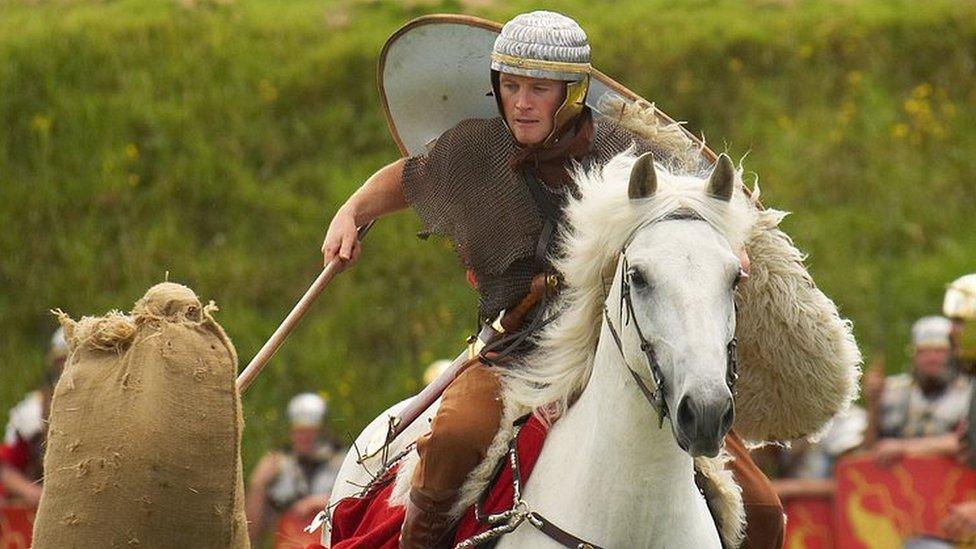
Roman cavalry, usually recruited from native tribes, often had expensively decorated equipment
Helen Sharp, curator of archaeology at Leicestershire County Council museums, said: "In Leicestershire, we get an awful lot of Iron Age settlements, small rural settlements across the county and a larger settlement at Leicester, which the Romans built on.
"Potentially, there might have been resistance, but not every tribe was anti-Roman.
"Potentially, there might have been some joining up with these new people who bring them all these wonderful things from the continent.
"We don't really know, but there were definitely lots of people in that period who would have been very affected by these Roman soldiers coming over."
Made with precious metals and superb craftsmanship, the helmet gives new insights into an era of rapid change.
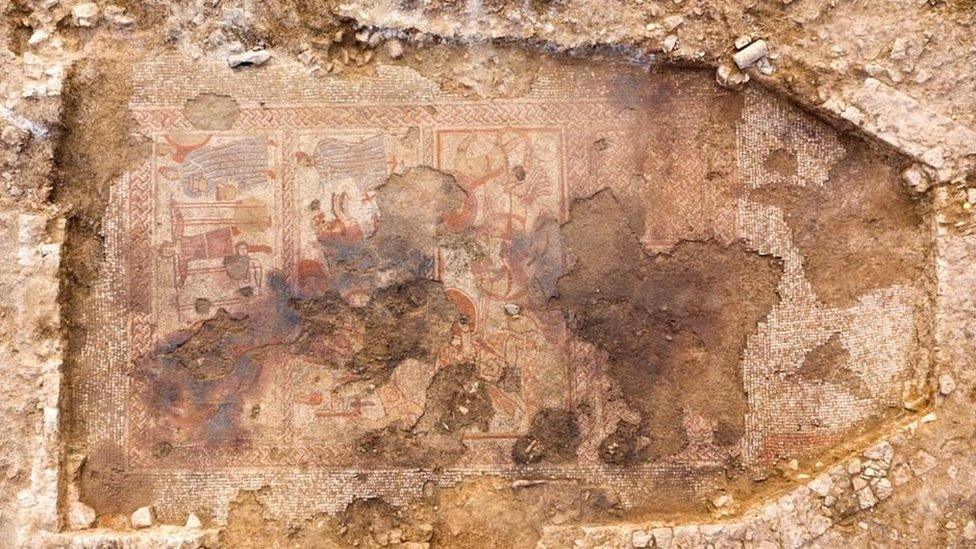
The discovery of a huge mosaic and villa in Rutland in 2020 showed the area was a prosperous part of the Roman Empire
Ms Sharp said: "The Hallaton helmet is extremely important, it is one of a handful of silver-plated helmets ever found in Europe.
"It is extremely high status; it would have been worn by an extremely high-status officer, and it just shows how well connected the Leicester area was at the time.
"You have got these people coming over who have these wonderful works of art on their heads, and it ended up in Leicestershire."
The fact the Romans used a roughly equal number of non-Roman soldiers - known as auxiliaries - as Romans in its armies means the helmet could have several stories behind it.

Detailed study of the helmet allowed for accurate reconstructions of the decoration
Tim Savage, from the Market Harborough museum, said: "There are a lot of mysteries about this helmet.
"The main mystery is why it was buried near the village of Hallaton.
"Was it stolen from the Romans? Was it a gift from the Romans? Or was it somebody from the local tribes who worked their way up in the Roman army and did really well for themselves and had this bling helmet made for them to show their status?"
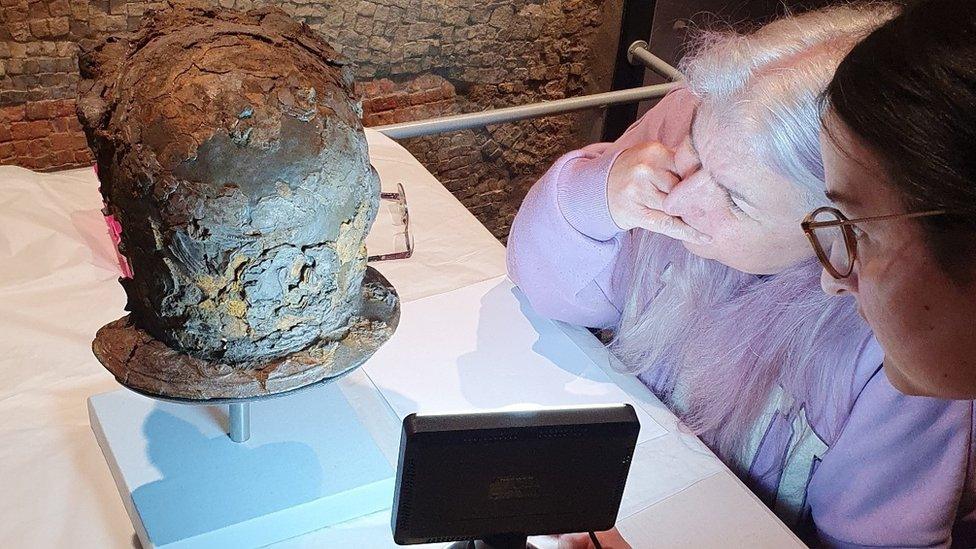
The helmet has undergone years of intensive study
The site at Hallaton has yielded more than 5,000 coins, silver ingots and large amounts of animal bone - mostly pig but including dogs - presumably left as ritual offerings.
Discovered in hundreds of corroded fragments, alongside seven cheekpieces, the helmet has been reconstructed by the British Museum.
The years of conservation work have meant a wealth of detail about its past has been revealed, external.
A basic iron helmet was covered in gilded silver. The silver was decorated with designs carefully hammered into the metal.
These feature a powerful female figure, a cavalryman, a weeping woman, and two newly-discovered griffins, likely symbolising protection for the wearer.

Rebuilding the past
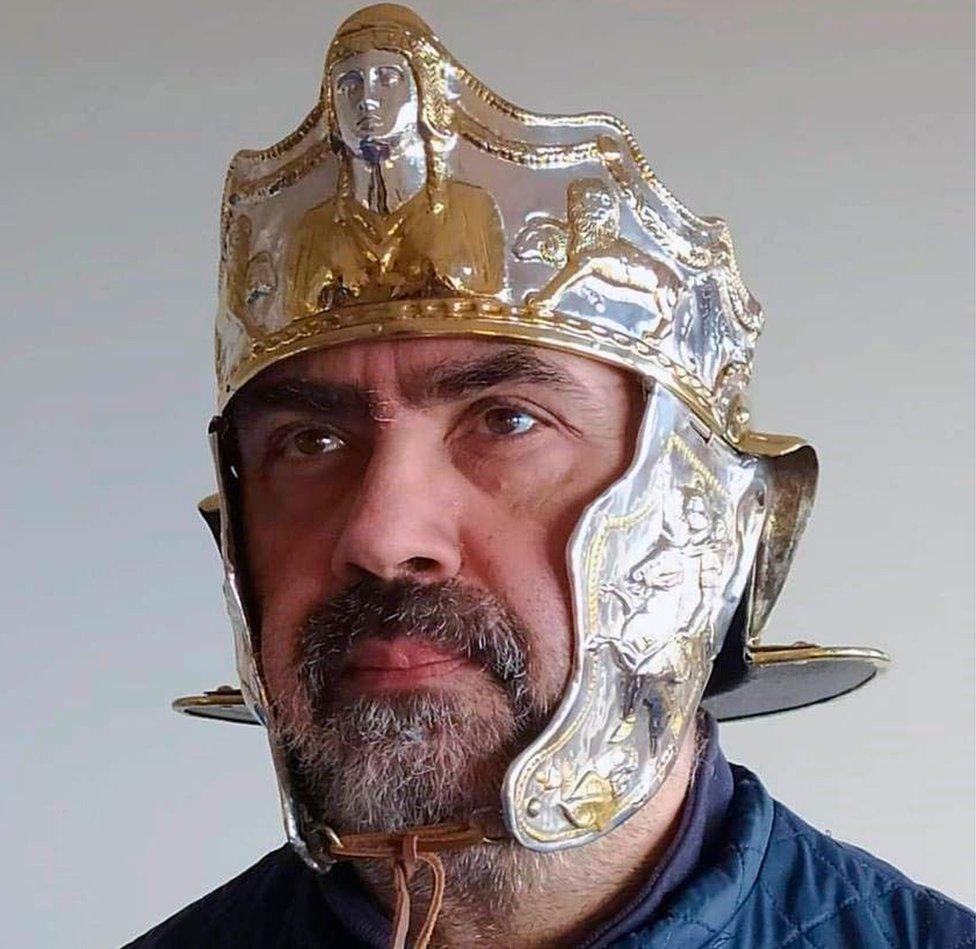
Archaeologist and replica maker Francesco Galluccio hand-built one of the reconstructions
Two reconstructions of the helmet were commissioned.
The first by Rajesh Gogna, a Leicestershire-based silversmith, used a computer scan to create a 3D print in resin, which was then electroformed, silver-plated and gilded.
The second, by Italian archaeologist and replica maker Francesco Galluccio, was built by hand.
He said: "I did not use traditional techniques but I tried to understand and reconstruct the techniques of the Roman era through the comparison of many helmets and experimental verification.
"The reconstruction work was also a study moment that allowed us to focus on some still unclear aspects, in full cooperation with the museum's management with mutual exchange of experiences and knowledge."
The main helmet "bowl" was hammered from a single sheet of iron, with a second, silver, helmet fixed over the top, which was in turn highlighted using gold leaf.
Mr Galluccio said: "The work started over a year ago and was carried out with intense and continuous collaboration with the museum's management, succeeding in creating an incredible result.
"The reconstruction has no fantasy parts but is based only on the actual existing pieces.
"I believe that the decision to make a reconstruction to go next to the original was very timely and far-sighted, the effect is very beautiful and educational."

Mr Savage said: "We can get a lot of information from history, books written by people at the time.
"But for the helmet, we had to rely on what archaeology and science can tell us.
"So over the years, as the helmet and cheekpieces were studied, a range of techniques were used to discover what they were made from, how it was constructed.
"X-rays showed us what sort of decoration was on the cheekpieces.
"One piece was quite corroded, so it was difficult to see, but the X-rays showed a bearded face, which we think is a Dacian, from modern-day Romania.
"So we have this really intriguing set of objects, potentially from all around Europe, which are in Hallaton, which we can't read about, but by carefully taking them out of the ground and analysing them, we can reveal so much."
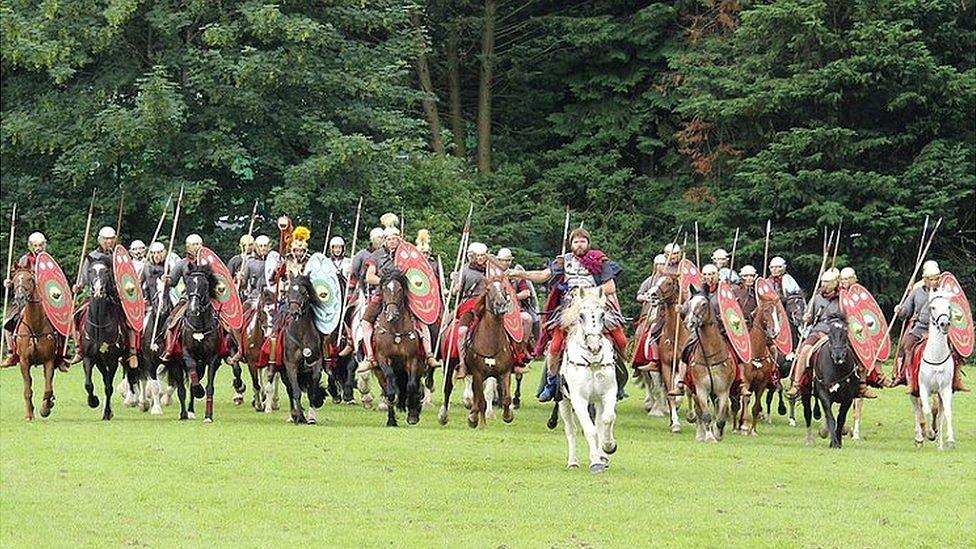
Roman cavalry was designed to impose "shock and awe" on its opponents
The main body of the helmet was fitted with hinged cheekpieces. One is likely to have come from the helmet, but the relationship of the other six is unclear.
Two cheekpieces have been put back on the helmet, with the other five laid out beneath.
Mr Savage said: "The way it is displayed means you say to yourself, 'that is a helmet I could wear; that is something I could wear into battle on the back of a horse'.
"And the reconstructions show how bling it was, how gleaming, and how terrifying it would have been for the local tribes 2,000 years ago to face someone wearing that rushing towards them with their sword drawn."
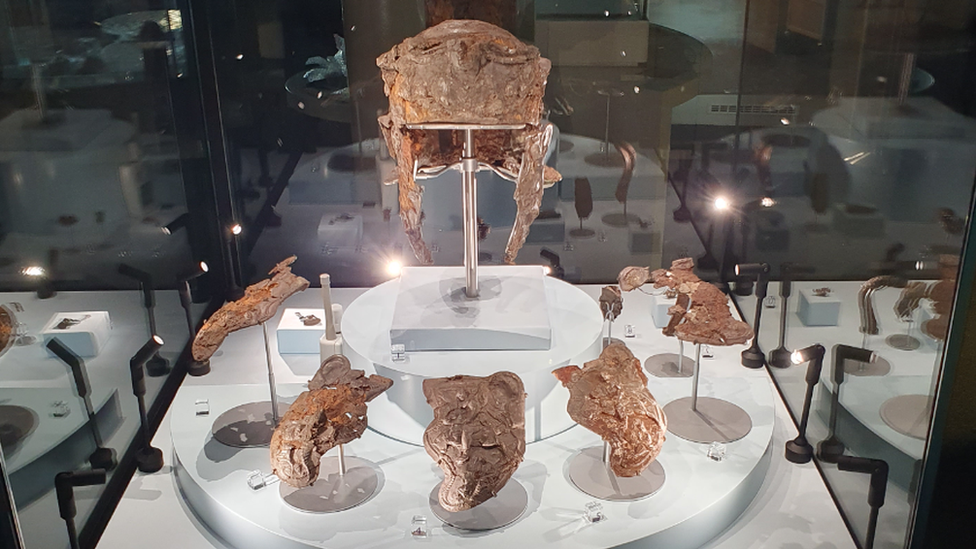
The helmet has been returned to Harborough Museum after conservation work
Ms Sharp said: "One of the most interesting things about it is that it is very early in that period for something of this quality to be buried in Leicestershire.
"Before the Hallaton treasure was found, it was thought Leicestershire was a bit of a backwater; it didn't have these connections with continental Europe.
"But this shows they were connected, they were right in the thick of it."
The conservation and reconstruction work has been funded by the Leicestershire Archaeological and Historical Society, with assistance from Market Harborough Historical Society, Leicestershire Fieldworkers, The Friends of Leicester and Leicestershire Museums, Market Harborough & the Bowdens Charity and the National Lottery Heritage Fund.

Follow BBC East Midlands on Facebook, external, on X, external, or on Instagram, external. Send your story ideas to eastmidsnews@bbc.co.uk, external or via WhatsApp, external on 0808 100 2210.
Related topics
- Published26 March 2024
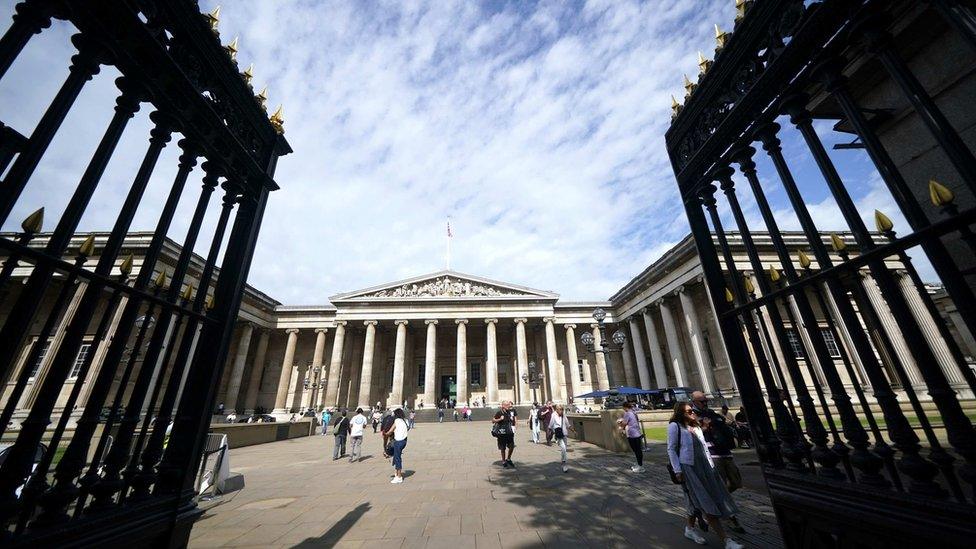
- Published24 March 2024
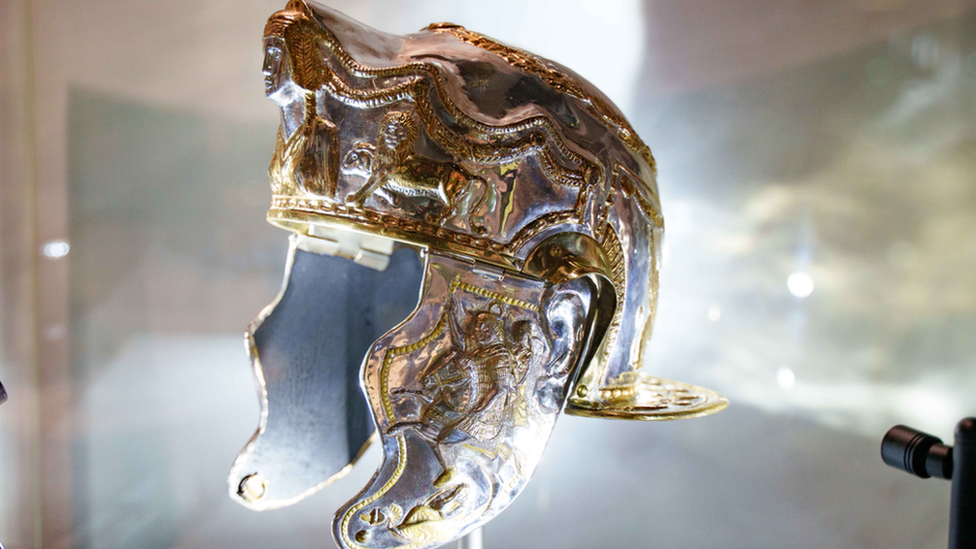
- Published5 February 2024
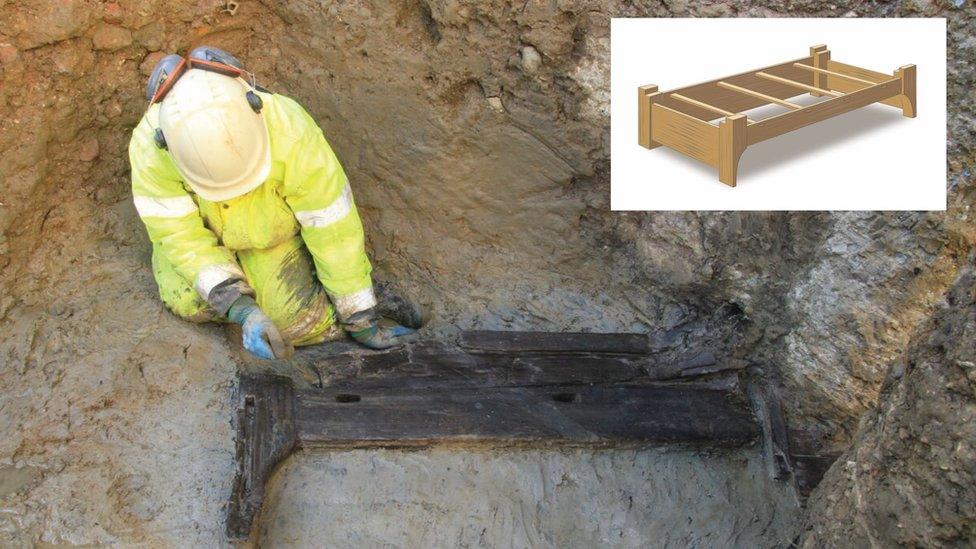
- Published4 March 2022
